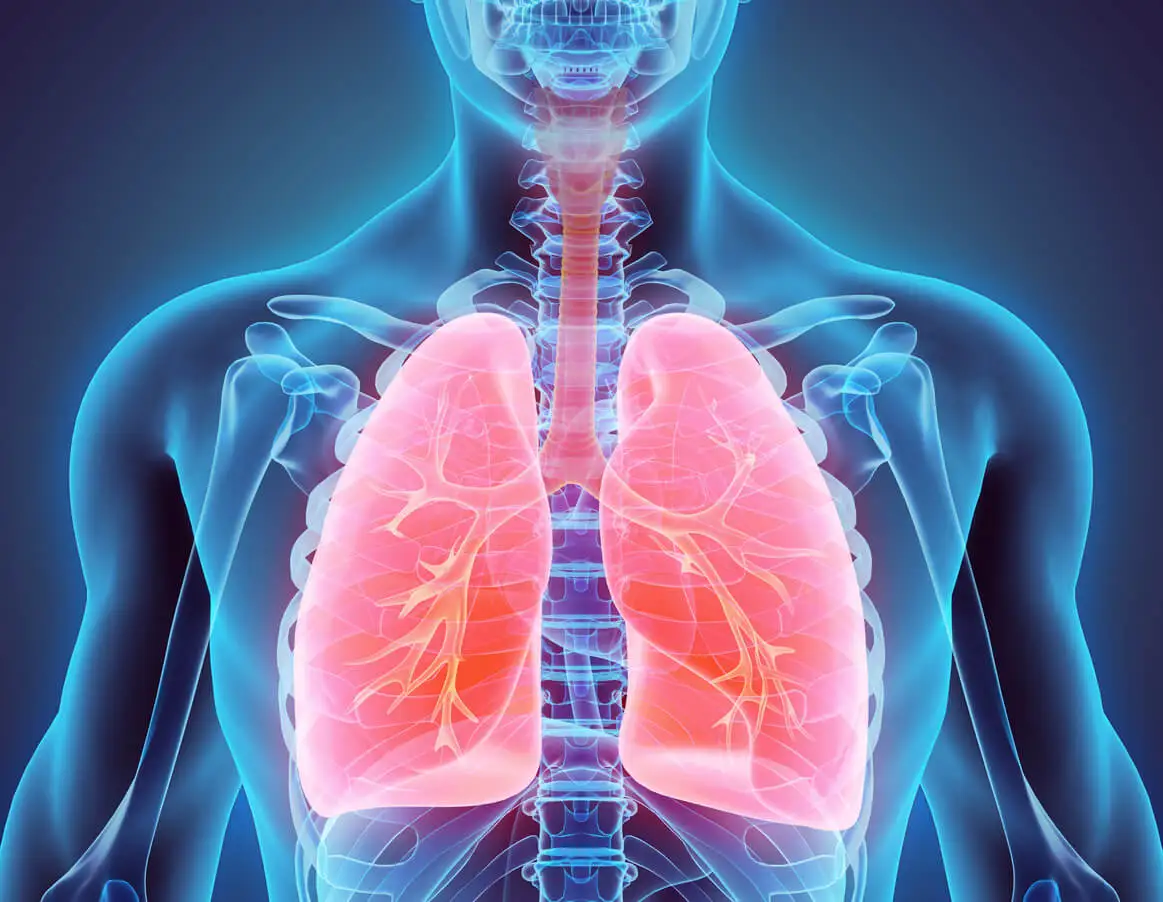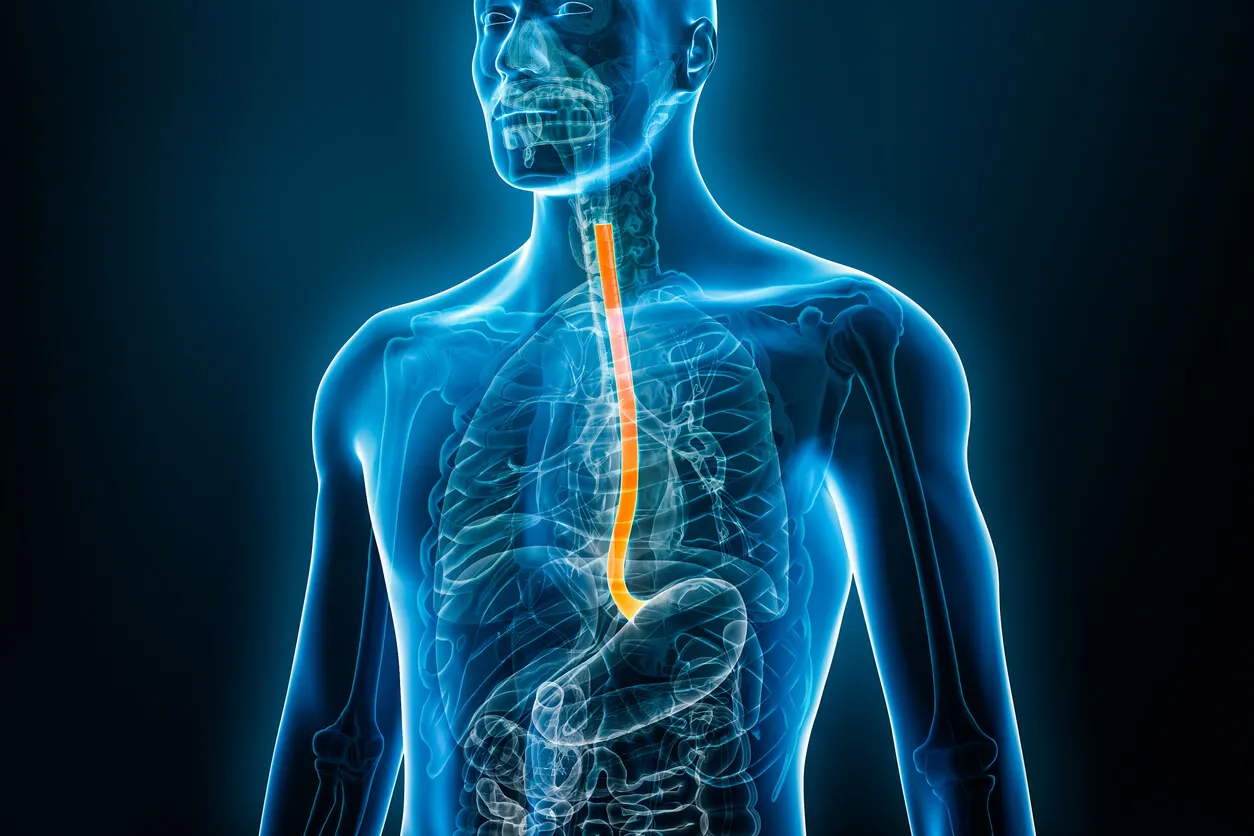Can Food Go Down the Wrong Pipe?


Reviewed and approved by the doctor Leonardo Biolatto
Most of us have experienced a choking sensation while drinking or eating something. That’s when we say the typical phrase: “It went down the wrong pipe” or “it went down the wrong way”. But is it really true that food can go down the wrong pipe?
The short answer to this question is yes. In medical terms, it’s known as ‘aspiration’ and occurs when the food, instead of going down the esophagus, is diverted into the trachea.
Beyond being an uncomfortable situation, it poses some health risks. That’s why we tell you how it happens and what to do to deal with it.
What happens when food goes down the wrong pipe
When food goes down the wrong way several symptoms can be triggered. The most obvious is a choking sensation, which manifests itself with coughing and chest tightness. Also, as a rush of adrenaline occurs, the heart rate accelerates and blood pressure rises.
Depending on the severity of the situation, oxygen levels may be reduced. If so, immediate medical attention should be sought to avoid more serious complications.
Why does this happen? The problem is known as “aspiration” and can happen by accident or due to some condition that causes swallowing difficulties.
To understand it better, we must start with the fact that we have two ducts in the throat area: the esophagus and the trachea. The first is the feeding tube, through which food passes into the stomach. The second is the breathing tube, which not only transports gases, but also protects the respiratory tract by warming and humidifying the air and expelling possible foreign agents.
When food or beverages are swallowed, they are placed near the ends of both tubes. However, when swallowing, the airway closes and the esophagus opens to allow the food to pass through the correct tube. However, different factors can affect this process.
We think you may also enjoy reading this article: Smart Eating: How to Design a Balanced Weekly Menu
What causes food to go down the wrong tube?
Under normal conditions, the vocal cords and epiglottis are responsible for keeping the airway closed. Thus, food, beverages, and saliva don’t leak into the lungs. In healthy people, this process can be disrupted by eating too fast, being distracted, or talking with a full mouth.
If so, both passages remain open, making it possible for food to slip down the wrong pipe. However, as detailed in a publication by the Cleveland Clinic, at that moment, a fight or flight mechanism is usually activated, manifested by a gag and cough reflex.
This allows the aspirated material to be automatically expelled. However, this is not always the case.
In severe cases, food particles can move into the lungs, leading to other complications. Especially when aspiration is recurrent.
It should be noted that, in some people, this situation occurs because their throat muscles don’t work properly. These cases are known as “dysphagia aspiration” and are related to the following health problems:
- Muscular dystrophy
- Brain injuries
- Cerebrovascular accidents
- Spinal cord impairment
- Blockage of the esophagus, due to a tumor, for example
- Parkinson’s disease or other neurological disorders
- History of radiation therapy or surgery for throat cancer
- Conditions that reduce the amount of saliva, such as Sjögren’s syndrome

What happens in the body when food is diverted into the trachea?
In most cases, when food accidentally passes into the trachea, the cough reflex allows it to be expelled again. Thus, in a matter of seconds, a feeling of relief is obtained without major complications.
This can be accompanied by a feeling of obstruction in the throat, as well as irritation and pain. Fortunately, these discomforts disappear quickly and without the need for treatment.
Complications arise if the material manages to leak into the lungs or if, due to some disease, aspirations are recurrent. If so, other manifestations may include the following:
- Pain when swallowing
- Excessive salivation
- Burning in the stomach
- Mild chest pain
- Fever shortly after eating
- The sensation of food backing up in the mouth
- Shortness of breath or difficulty breathing, especially when eating
- Recurrent pneumonia
- Nausea and vomiting
- Weight loss
- Stressful eating
The presence of these symptoms is a reason for medical consultation.
Depending on the frequency and the material aspirated, only some or several may occur at the same time. In any case, the physician should evaluate the situation to obtain a diagnosis and suggest treatment according to the case.

Like this article? You may also like to read: Shoku Iku: The Japanese Philosophy of Healthy Eating
What to do if coughing did not solve the problem?
There is another first aid measure that can be implemented when coughing is not enough to expel food debris that leaks through the trachea. Pulmonologist Bohdan Pichurko explains it through a Cleveland Clinic publication:
- The first measure is not to panic.
- Then, you have to suspend whatever you are doing at the time, to lie on your stomach with a cushion under your hips.
- From this position, the trachea is slightly tilted downwards, which usually facilitates the expulsion of foreign material.
When should a doctor be consulted?
Because of the risks involved in aspiration, there are some cases in which it’s best to see a doctor. If the cough reflex and first aid did not work, the cough will probably last for more than two hours. If so, seek immediate care.
Other warning signs include vomiting with bleeding, fever, chills, and stabbing pain in the chest. It’s important to avoid further food or drink before being checked by a professional.
The physician can arrive at the diagnosis with a physical examination and complementary tests, such as the following:
- Sputum tests
- Chest x-rays
- Swallowing studies
- CT scans
Treatment may vary from person to person, depending on the identified cause. Sometimes a bronchoscope is used to remove the food particle. Also, if there are signs of bacterial infections, antibiotics are prescribed.
Other medium-term measures include the following:
- Dietary changes.
- Swallowing therapy, which involves exercises to strengthen and coordinate the muscles.
- Surgery. Necessary when other treatments don’t work and there is a severe swallowing problem that prevents swallowing food.
How do you prevent food from going down the wrong channel?
Correcting some mealtime behaviors is the best way to prevent particles from leaking down the wrong channel. Thus, it’s best to implement the following:
- Eat smaller bites: eating very large and abundant chunks is one of the reasons why food strays. The key is to divide it into smaller portions and take enough time to chew well.
- Avoid talking with your mouth full: this bad habit prevents the airways from closing properly when swallowing food. Therefore, try to eat in silence, at least while the food remains in your mouth. The same applies to laughter.
- Concentrate on the food: the use of electronic devices during meals, or any other distracting element, increases the risk of aspiration. Focus your attention on food.
- Good posture: of course, during meals, maintain proper body posture. If possible, you should remain upright. If you have to eat in bed, use a wedge-shaped pillow to raise your body to a safe position.
- Drink water with meals: the liquid will help moisten the food in the mouth, which will decrease the chances of it entering the airways.
What should you remember?
Food going down the wrong passageway is a possibility we’re all exposed to. It often occurs from distractions while eating, talking with a full mouth, or trying to swallow too much food without chewing properly.
Often, this is resolved within seconds by the cough reflex.
However, if this is not the case, it’s a good idea to consult a physician to prevent possible complications. It should not be ignored that this situation may also be the manifestation of other underlying problems. The sooner a diagnosis is made, the better the chances of recovery.
All cited sources were thoroughly reviewed by our team to ensure their quality, reliability, currency, and validity. The bibliography of this article was considered reliable and of academic or scientific accuracy.
- Chaudhry SR, Bordoni B. Anatomy, Thorax, Esophagus. [Updated 2022 Jul 25]. In: StatPearls [Internet]. Treasure Island (FL): StatPearls Publishing; 2023 Jan-. Available from: https://www.ncbi.nlm.nih.gov/books/NBK482513/
- Cramer N, Jabbour N, Tavarez MM, et al. Foreign Body Aspiration. [Updated 2023 Jan 23]. In: StatPearls [Internet]. Treasure Island (FL): StatPearls Publishing; 2023 Jan-. Available from: https://www.ncbi.nlm.nih.gov/books/NBK531480/
- Gonzalez, C. (2022, 2 agosto). Aspiration – Otorhinolaryngology – Head & Neck Surgery. Otorhinolaryngology – Head & Neck Surgery. https://med.uth.edu/orl/2020/01/10/aspiration/
- Hatziagorou, E., Kirvassilis, F., Kotzamani, M., Karailidou, M., Skouras, A., Kontzoglou, G., & Tsanakas, J. (2018). Flexible bronchoscopy in diagnosis and removal of foreign body aspiration in children. https://doi.org/10.1183/13993003.congress-2018.pa1374
- O’Rourke, F., Vickers, K., Upton, C., & Chan, D. (2014). Swallowing and oropharyngeal dysphagia. Clinical medicine (London, England), 14(2), 196–199. https://www.ncbi.nlm.nih.gov/pmc/articles/PMC4953294/
- Precauciones Para Evitar La Aspiración Care Guide Information En Espanol. (s. f.). Drugs.com. https://www.drugs.com/cg_esp/precauciones-para-evitar-la-aspiraci%C3%B3n.html
- Team, L. B. A. A. (2022, 10 octubre). What’s Going On When Something Goes Down the Wrong Pipe? Cleveland Clinic. https://health.clevelandclinic.org/whats-going-on-when-something-goes-down-the-wrong-pipe/
This text is provided for informational purposes only and does not replace consultation with a professional. If in doubt, consult your specialist.








